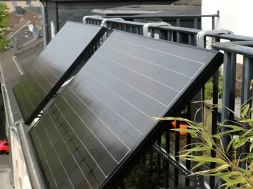
Barely 2% of the ambitious five-year target for roof-top solar power generation has been achieved; prompting the State government to tweak the rules to encourage more participation. In an event organised by the industrial association ASSOCHAM on Tuesday, P. Ravikumar, Additional Chief Secretary of the Energy Department, said just 57MW of solar roof-top energy is being produced in the State – a far cry from the 2,400MW target for 2022. “The process is too technical for citizens. We need simpler procedures and active participation from the residents – and one way to achieve this is by making the process online,” he said.
However, when it comes to solar plants and open access grid production, production has far exceeded demand from companies and industries who directly buy solar power. “This has led to closing of a few plants to avoid redundancy. Access to these solar grids necessitates negotiating a lot of red tape, which is difficult for corporates. This will be rectified,” he said. The reduction in price for solar energy, from ₹8 per unit in 2016 to ₹4 now, will encourage more corporates to adopt solar power, he said.
Production on the rise
There was hope, however, that solar power production and consumption will increase in the coming months. The State is scheduled to add 400MW of solar power by March — in addition to the 524MW being produced and consumed at present. Andrew Hines, co-founder and head of business development in south India for Clean Max Solar, which has invested in 50MW of solar projects, sought clarity on subsidies. “The solar policy provides concessions and waivers from grid charges till March 2018. However, it takes 6 to 8 months to sign a contract and set it up. This means that effectively, we can sign contracts to obtain subsidies only till September 2017,” he said. He also sought a change in the 1MW cap on roof-top solar plants, saying in large commercial buildings, the capacity is far more. “Rather than a general cap, the limit should be based on transmission capacity,” he said.













